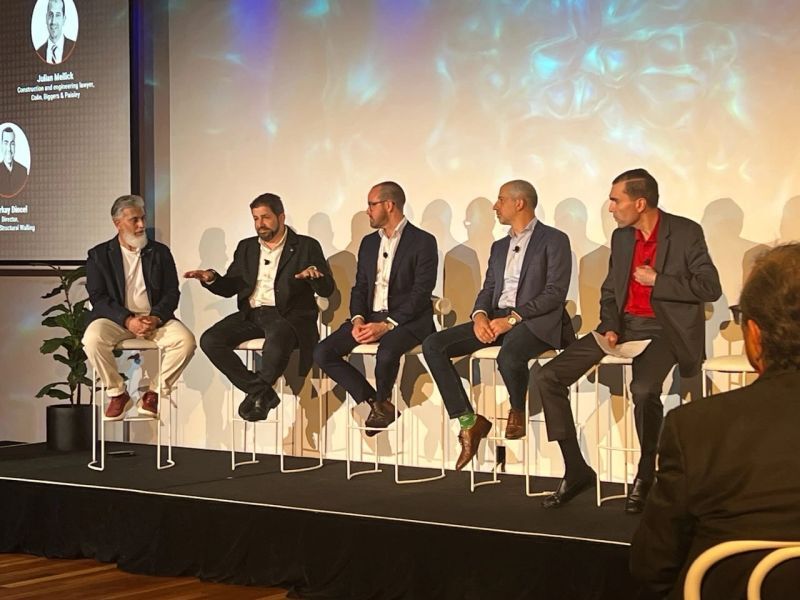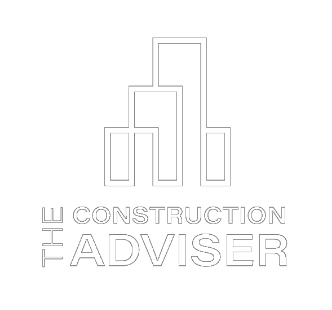
In the ever-evolving world of construction, innovation is the cornerstone of progress and growth. sentiment was vividly on display during Dincel's grand launch event for the Dincel Structural Walling Waterproof System. Held at Sydney's iconic Museum of Contemporary Art, the evening brought together 120 industry professionals, clients, and friends in celebration of a groundbreaking advancement in basement construction.
Dincel Group, led by Chairman Burak Dincel and with TV personality and landscape architect Jamie Durie OAM as the guest MC, orchestrated an event that not only marked a significant milestone in construction but also provided a platform for a captivating panel discussion. The panel included TCA's very own Managing Director, Stan Giaouris along with Sam Parker, Julian Mellick, Andrew Tunks, and Berkay Dincel. These visionaries shared their unrelenting passion for innovation within the construction industry.
"From the past to the present," Stan reaffirmed as a key panel member, "the waterproofing sector of the construction industry has showcased a rich history of embracing innovation. These advancements have been pivotal in enhancing efficiency, ensuring sustainability, and elevating the overall quality of construction projects." Stan emphasised the crucial role played by companies such as Dincel, urging robust support to enable them to continue making significant strides in the industry.
Solving An Expensive Problem
The Dincel Structural Walling Waterproof System (DWS) was developed because of the absence of specific building codes in Australia addressing basement construction challenges, such as water ingress, impact on aquifers, and mould issues, and consequently has led to inconsistent and subpar outcomes for consumers. Although some overseas standards like British Standard BS 8102 - 2022 are utilised, there are no provisions that comprehensively cover issues like groundwater intake reduction, energy efficiency, or mould prevention. Despite existing government acts and regulations, their enforcement is lacking, leaving construction decisions primarily in the hands of builders and developers.
In response to these challenges, Dincel has developed the Dincel Water Stop (DWS), offering a solution with a zero-leakage warranty for up to 50 years. Unlike fully tanked systems that require significant excavation and often result in complex responsibility disputes in case of leaks, the DWS system ensures complete accountability lies with Dincel. It offers a robust solution for waterproofing, structural integrity, and thermal insulation. The Dincel system is designed to save time, reduce waste, and improve the overall efficiency of construction projects.
Innovative Waterproofing Solutions: A Multifaceted Challenge
The importance of innovative waterproofing solutions cannot be overstated. Waterproofing is not merely a technical detail, however, addressing the complexities of waterproofing is not a task for a single entity; it requires a collaborative effort from multiple stakeholders within the construction industry.
1. Collaborative Problem-Solving
Innovations in waterproofing demand a collaborative approach involving architects, engineers, material scientists, and construction professionals. Together, they need to explore cutting-edge materials and techniques that go beyond conventional waterproofing methods. This collaborative problem-solving can lead to the development of sustainable, eco-friendly, and highly efficient waterproofing solutions.
2. Adaptability and Versatility
Waterproofing challenges are diverse and can vary significantly based on the type of structure, climate, and geological factors. Innovations in waterproofing must be adaptable and versatile, capable of addressing a wide array of scenarios. This adaptability ensures that waterproofing solutions can cater to the unique needs of different construction projects, from residential buildings to large-scale infrastructures.
3. Enhancing Safety and Structural Integrity
Waterproofing innovations directly impact the safety and structural integrity of buildings. Water infiltration can compromise the stability of structures, leading to potential hazards. Innovative waterproofing solutions act as a shield, ensuring buildings remain resilient against water-related damages. This enhanced safety is crucial for both construction workers during the building process and occupants once the structure is in use.
4. Regulatory Compliance and Industry Standards
The construction industry operates within a framework of regulations and standards aimed at ensuring the quality and safety of built environments. Innovations in waterproofing must align with these regulations, meeting or exceeding the industry standards. Collaboration between innovators and regulatory bodies is essential to bridge the gap between cutting-edge technologies and established norms.
In summary, the innovation in waterproofing is not just a technical advancement; it represents a multi-stakeholder challenge that requires the collective expertise, creativity, and dedication of professionals across various fields. By fostering collaboration, emphasising sustainability, ensuring adaptability, enhancing safety, and aligning with regulations, the construction industry can revolutionise waterproofing practices, ensuring resilient, durable, and environmentally conscious structures for the future.
read more articles

